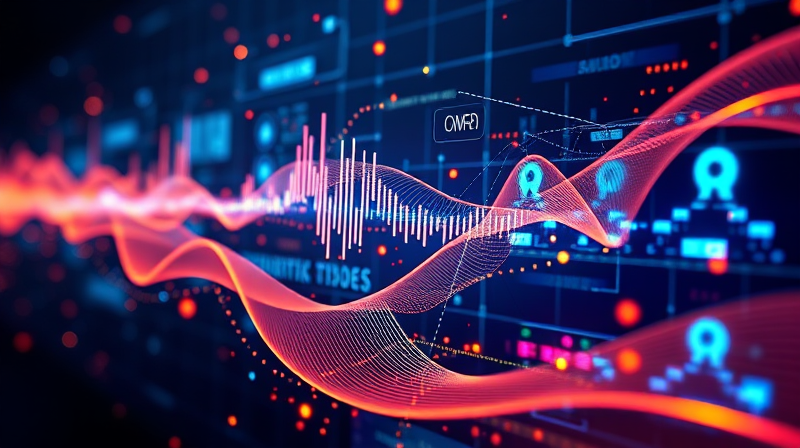Autonomous reporting systems are transforming the way businesses analyze and interact with data. In a world where real-time insights are essential to drive growth, these systems empower companies to make informed decisions with unprecedented speed and accuracy.
With technologies advancing rapidly, businesses are increasingly looking to integrate artificial intelligence (AI) and machine learning (ML) into their reporting frameworks. This evolution is crucial as it shifts the paradigm from traditional static reports to dynamic, interactive insights that adapt to ever-changing business conditions.
Cutting-Edge Technologies Driving Autonomous Reporting
AI and Machine Learning form the core of autonomous reporting. These technologies analyze historical data, adapt to new patterns, and predict future outcomes. By learning from previous results, systems can automatically discover trends that might otherwise remain hidden, ensuring that decision-makers are always a step ahead.
Systems powered by AI and ML offer several benefits:
- Continuous Learning: The ability to constantly update and improve insights based on new data.
- Automatic Report Generation: Reducing the need for manual intervention by creating and updating reports in real time.
- Adaptability: Adjusting to evolving business environments without the need for extensive reprogramming.
These attributes allow companies to harness predictive and prescriptive analytics to anticipate challenges and seize opportunities.
Moreover, the implementation of real-time data processing ensures that all data is analyzed as soon as it enters the system. This immediacy allows for rapid identification of anomalies, enabling businesses to react promptly to potential risks and market changes.
As the pace of business accelerates, the ability to process insights on the fly becomes not just an advantage, but a necessity for effective strategic planning.
Enhancing Reporting Through Advanced Analytics
The shift from simple aggregation to advanced analytics marks a significant turning point in reporting capabilities. Beyond basic metrics, today's autonomous systems utilize powerful analytic tools to uncover hidden trends and patterns across diverse datasets.
Predictive analytics forecasts future trends by analyzing current and historical data, while prescriptive analytics recommends specific actions based on those insights. Additionally, anomaly detection identifies outliers that may signal anomalies or opportunities, creating a holistic view of operational performance.
These capabilities empower leadership teams by providing a clear, data-driven understanding of business health, ultimately leading to better resource allocation and strategic planning.
Streamlined Data Governance and Enhanced Security
Robust data governance is essential in ensuring the reliability and integrity of reported information. Autonomous reporting systems come equipped with automated data cleansing and validation processes, which are crucial for maintaining data quality and security.
Features such as continuous monitoring of data integrity and enforcement of regulatory compliance ensure that the data remains accurate and secure. In industries where precision is imperative, these gateways provide the necessary confidence in the report's accuracy.
Blockchain integration further cements this security by offering improved audit trails and an immutable record of data transactions. By partnering blockchain with autonomous reporting, businesses can establish an unparalleled level of trust in the veracity and transparency of their data.
User-Friendly Features and Customization
Autonomous reporting systems are designed with the user in mind, offering customizable dashboards that cater to the various needs of decision-makers. These dashboards come equipped with interactive visualizations and personalized KPI tracking, allowing users to get a tailored view of the business landscape.
Natural Language Processing (NLP) enhances these systems further by translating complex data into easily understandable reports. With conversational interfaces, users can ask questions and receive answers in plain language, making it simpler to interpret data and understand complex trends.
This emphasis on user experience makes these systems accessible to a broader range of professionals, regardless of their technical expertise, thus democratizing data insights across all levels of an organization.
Moreover, the multimodal capabilities of these reporting systems allow for processing a variety of data types, from text and numbers to images and audio. This versatility is key to extracting comprehensive insights that span multiple aspects of a business, ensuring that no critical piece of information is overlooked.
With the integration of comprehensive features like these, businesses can not only improve their operational efficiency but also foster a culture of proactive decision-making and continuous innovation.
Autonomous reporting is more than just a trend; it is a strategic asset that equips organizations with the tools to navigate the challenges of a constantly evolving market landscape. Embracing this technology means stepping into a future where data is not just a byproduct of operations, but a dynamic, central element driving success.
Prepare for the future by adopting systems that automate and enhance reporting, empowering your business to stay ahead in a competitive market.








